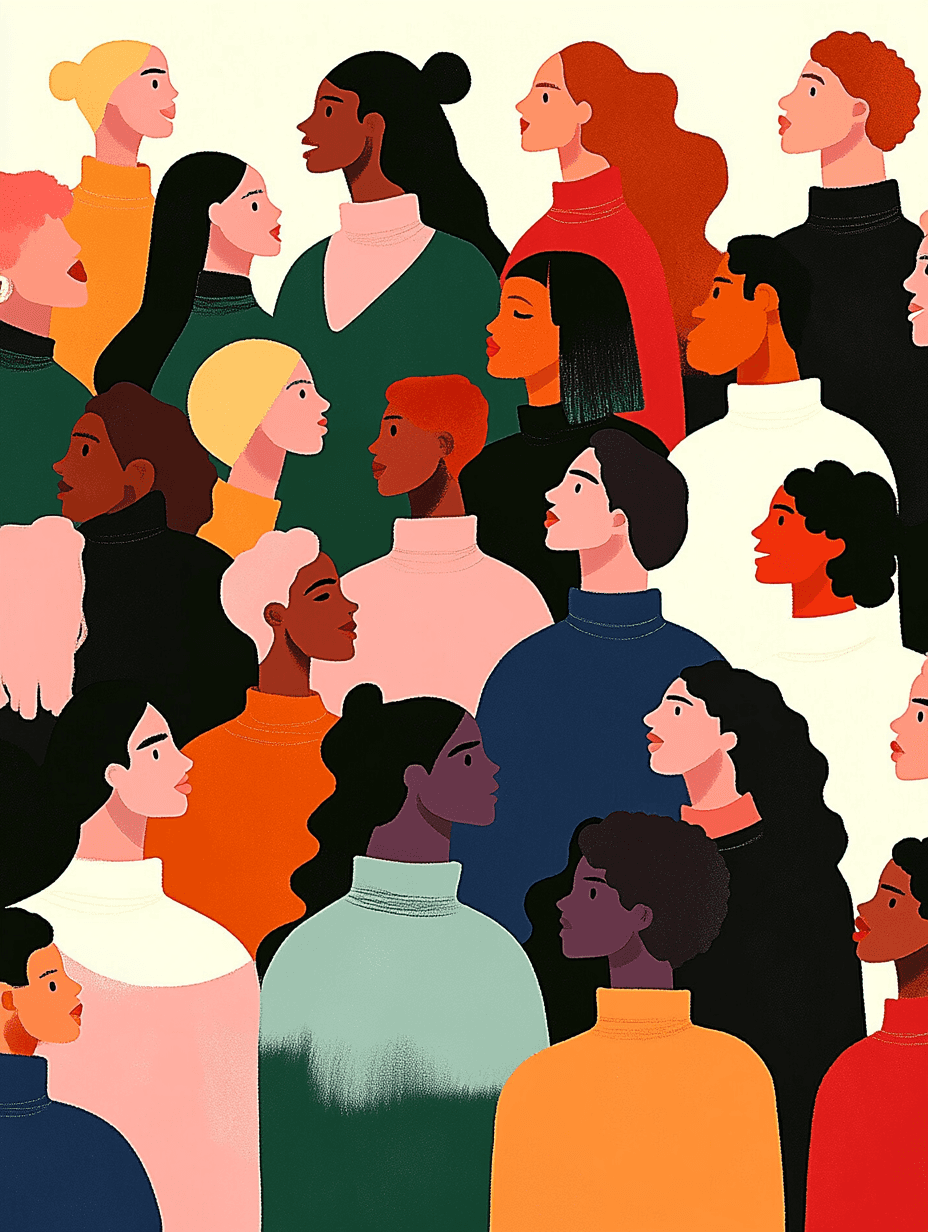January 13, 2024
Introduction
In the ever-evolving world of marketing, visuals play a critical role in capturing attention, conveying messages, and driving engagement. With consumers being bombarded with content on a daily basis, it’s become increasingly important for businesses to create compelling and memorable visual marketing campaigns. Whether it’s through striking images, engaging videos, or eye-catching graphics, the visual impact of marketing campaigns can make or break their success.
This article explores the power of visuals in marketing, offering insights on how to harness their full potential to create campaigns that not only stand out but also resonate with your audience.
The Importance of Visuals in Marketing
Visual elements have a profound effect on how information is perceived and retained. Studies show that people process visual content 60,000 times faster than text, and that 90% of information transmitted to the brain is visual. In a world where attention spans are shrinking, marketers need to create campaigns that convey their message quickly and effectively.
Here are some key reasons why visuals are essential in marketing:
Grabbing Attention: In a crowded digital space, visuals are crucial for grabbing a viewer's attention. Images and videos can stop a user mid-scroll, encouraging them to engage with the content.
Improving Brand Recognition: Consistent use of color, fonts, and imagery helps build brand recognition. Over time, your audience will associate certain visual cues with your brand, making it more memorable.
Boosting Engagement: Social media posts with images generate 650% more engagement than text-only posts. High-quality visuals encourage likes, comments, shares, and clicks.
Aiding Communication: Visuals can simplify complex messages. Infographics, charts, and videos can make complicated data or ideas easier to digest.
Eliciting Emotions: Effective visuals can stir emotions, which is key to influencing purchasing decisions. People are more likely to engage with content that evokes feelings of happiness, nostalgia, or excitement.
With these benefits in mind, it’s clear that visuals should be a core component of any marketing campaign. But how can businesses create visuals that make a lasting impact?
1. Understand Your Audience
To create visuals that resonate, you need to know who your audience is. Different demographics respond to different types of visuals. A campaign targeting Gen Z might rely heavily on memes, short-form videos, or bold, colorful designs, while a campaign aimed at professionals may feature sleek, minimalist visuals.
Actionable Steps:
Conduct Audience Research: Gather insights about your target audience’s preferences, behaviors, and visual tastes.
Analyze Competitors: Look at the visual strategies used by competitors targeting the same audience. Identify what works and what doesn’t.
Create Personas: Build detailed customer personas to guide your visual style and content creation.
By tailoring your visuals to the specific tastes and preferences of your audience, you’ll increase the chances of making a strong connection.
2. Use High-Quality Imagery
Quality matters when it comes to visuals. Low-resolution, poorly designed images can hurt your brand’s credibility and make your campaign appear unprofessional. On the other hand, high-quality visuals can convey a sense of trust and professionalism.
Types of Visual Content:
Photos: Use high-resolution images that align with your brand’s tone and message. Stock photos can work in some cases, but original photography often has a greater impact.
Graphics and Illustrations: Custom graphics and illustrations can help set your brand apart and create a unique aesthetic that is instantly recognizable.
Videos: Video is one of the most engaging forms of content. Whether it’s a product demo, testimonial, or behind-the-scenes footage, videos can convey a message more dynamically than static images.
Infographics: Infographics are great for breaking down complex information into a visually appealing and easy-to-understand format. They’re especially effective in content marketing and on social media.
Actionable Tip:
If you don’t have the resources to hire professional designers or photographers, use tools like Canva or Adobe Spark to create high-quality graphics that still look professional.
3. Create a Consistent Visual Identity
Consistency in visuals helps build brand recognition. When all your marketing materials use the same color schemes, fonts, and design elements, they reinforce your brand identity. Over time, customers will come to associate these visuals with your business, strengthening your presence in the marketplace.
Elements of a Visual Identity:
Logo: Your logo is the cornerstone of your brand’s visual identity. It should be used consistently across all marketing materials.
Color Palette: Colors evoke emotions and can influence consumer behavior. Choose a color palette that reflects your brand’s personality. For instance, blue conveys trust, while red evokes excitement.
Typography: Select fonts that complement your brand’s voice. Whether it’s playful and casual or formal and sophisticated, your font choice should reflect your brand’s character.
Imagery Style: Decide on a style for your imagery—whether it’s minimalist, bold, abstract, or realistic—and stick to it.
Actionable Tip:
Develop a brand style guide that outlines all of these elements to ensure consistency across every platform, from social media posts to email campaigns.
4. Leverage the Power of Video
Video content is king when it comes to creating a visual impact. Whether it’s short-form content for social media or long-form content for your website, video helps humanize your brand and engage your audience on a deeper level. As of 2024, video content accounts for 82% of all internet traffic, making it a crucial component of any marketing campaign.
Types of Video Content:
Explainer Videos: Help your audience understand your product or service through animated or live-action explainer videos.
User-Generated Content (UGC): Encourage your customers to share videos of themselves using your product. UGC builds trust and acts as social proof.
Behind-the-Scenes: Show the human side of your brand with behind-the-scenes footage of your team, workspace, or product development process.
Live Streaming: Engage your audience in real-time with live video events, Q&A sessions, or product launches.
Actionable Tip:
Use platforms like YouTube, Instagram Reels, and TikTok to distribute your video content and reach a wider audience.
5. Focus on Emotional Appeal
Visuals have a unique ability to evoke emotions. Whether through the use of color, facial expressions, or visual storytelling, you can tap into your audience’s emotions to create a deeper connection. Emotionally charged campaigns are more likely to be remembered and shared, increasing their overall impact.
How to Create Emotionally Resonant Visuals:
Use Colors Effectively: Different colors evoke different emotions. Warm colors like red and orange can create excitement, while cool colors like blue and green promote calm and trust.
Tell a Story: Storytelling is one of the most powerful ways to connect with your audience on an emotional level. Use visuals to tell a story that resonates with your audience’s values and experiences.
Use Real People: Including real people in your visuals, whether through photos or videos, helps humanize your brand and makes it easier for your audience to relate to your message.
Actionable Tip:
Focus on visuals that align with the emotions you want your audience to feel, whether it’s joy, trust, or inspiration.
6. Optimize Visuals for SEO
Visuals can significantly improve your SEO performance when used correctly. Search engines like Google favor websites with multimedia content, and well-optimized images and videos can help boost your rankings.
SEO Best Practices for Visuals:
Alt Text: Always include descriptive alt text for your images. This helps search engines understand what the image is about and can improve your chances of ranking in image search results.
Image Compression: Large image files can slow down your website, which negatively impacts SEO. Use image compression tools to reduce file size without sacrificing quality.
Video Optimization: Host videos on platforms like YouTube or Vimeo to increase their visibility. Optimize video titles, descriptions, and tags with relevant keywords.
Responsive Design: Ensure your visuals are mobile-friendly. Given that more than half of all web traffic comes from mobile devices, responsive design is critical for both SEO and user experience.
Actionable Tip:
Use tools like TinyPNG or ImageOptim to compress images and Yoast SEO or Rank Math to optimize images and videos for SEO on your website.
Conclusion
The visual impact of marketing campaigns is undeniable. By leveraging high-quality imagery, creating a consistent visual identity, and tapping into the power of video, you can create marketing campaigns that not only stand out but also drive real results. Remember that visuals aren’t just about aesthetics—they’re a critical tool for communicating your brand’s message, building emotional connections, and ultimately influencing consumer behavior.
Investing in the right visual strategies will help your brand cut through the noise, capture attention, and achieve your marketing goals.
Get 10% off your first order, and be the first to know about new launches, competitions and events.







